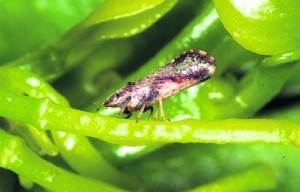By Tamara Lush
University of Florida researchers say they’ve found a possible treatment for a disease that’s devastating citrus trees around the state, but caution that it could be years before the cure could become commercially available to growers.
The team from UF’s Institute of Food and Agricultural Sciences said that it has discovered a chemical that kills the citrus greening bacteria (also known as huanglongbing or HLB).
The chemical — benzbromarone — has been used to treat gout in humans but has never been approved for use in the United States because of concerns over reports of acute liver injury. Researchers sprayed greenhouse tree shoots infected with greening with three different chemicals, and the benzbromarone halted the bacteria in 80 percent of the infected trees’ shoots.
The researchers published their findings in the journal PLOS Pathogens.
But researchers caution that this good news is the first step in a years-long process.
“We are getting closer and closer,” said Claudio Gonzalez, an associate professor at UF who is part of the three-person team in the microbiology and cell science department.
The chemical appears to break down the bacteria’s cellular structure — it doesn’t allow the bacteria to survive in the vascular system of the tree, the research found.
They’ve only tested the chemical in the lab. Researchers now must test the chemical in the real world — mature trees planted in a grove — and if that goes well, will eventually seek federal approval to use the chemical commercially. One of the key things to determine, said Gonzalez, is whether the chemical affects the taste of the citrus fruit.
The researchers will begin field experiments this year.
Ken Keck, the president of the California Citrus Research Board in Visalia, said that he’s read about the UF research and is measured with his optimism.
“Our industry growers are a sober bunch,” he said. “In that they realize that panaceas, magic bullets, when it comes to this challenging disease, they’ve been once bitten twice shy.”
Keck points out that if the chemical were to be effective on greening, it would still need USDA approval and approval from different states’ regulatory agencies.
Greening affects Florida’s $9 billion citrus industry. Florida growers are seeing the bacteria’s effects this season. This year’s orange crop is approaching the fruit’s lowest harvest in decades, and experts say greening is to blame.
Greening first enters the tree via the Asian citrus psyllid — which are jumping plant lice. The psyllid sucks on leaf sap and leaves behind bacteria. The bacteria starve the tree of nutrients which leads to sour, mottled fruit. The tree eventually dies.
Until now, greening has vexed researchers because there is seemingly no cure. It’s affected a large part of Florida’s orange crop and threatens the state’s entire citrus industry.
Other citrus growing regions, such as California, haven’t been as affected by greening as Florida. But researchers in California are also working to stave off the disease that threatens the state’s $1.8 billion citrus industry. Psyllids have been found in Fresno County, Tulare County and other parts of the state, and a 901-square-mile area in Tulare and Kern counties is under quarantine.
And state officials have confirmed that a psyllid had been found in a trap near Farmersville.



